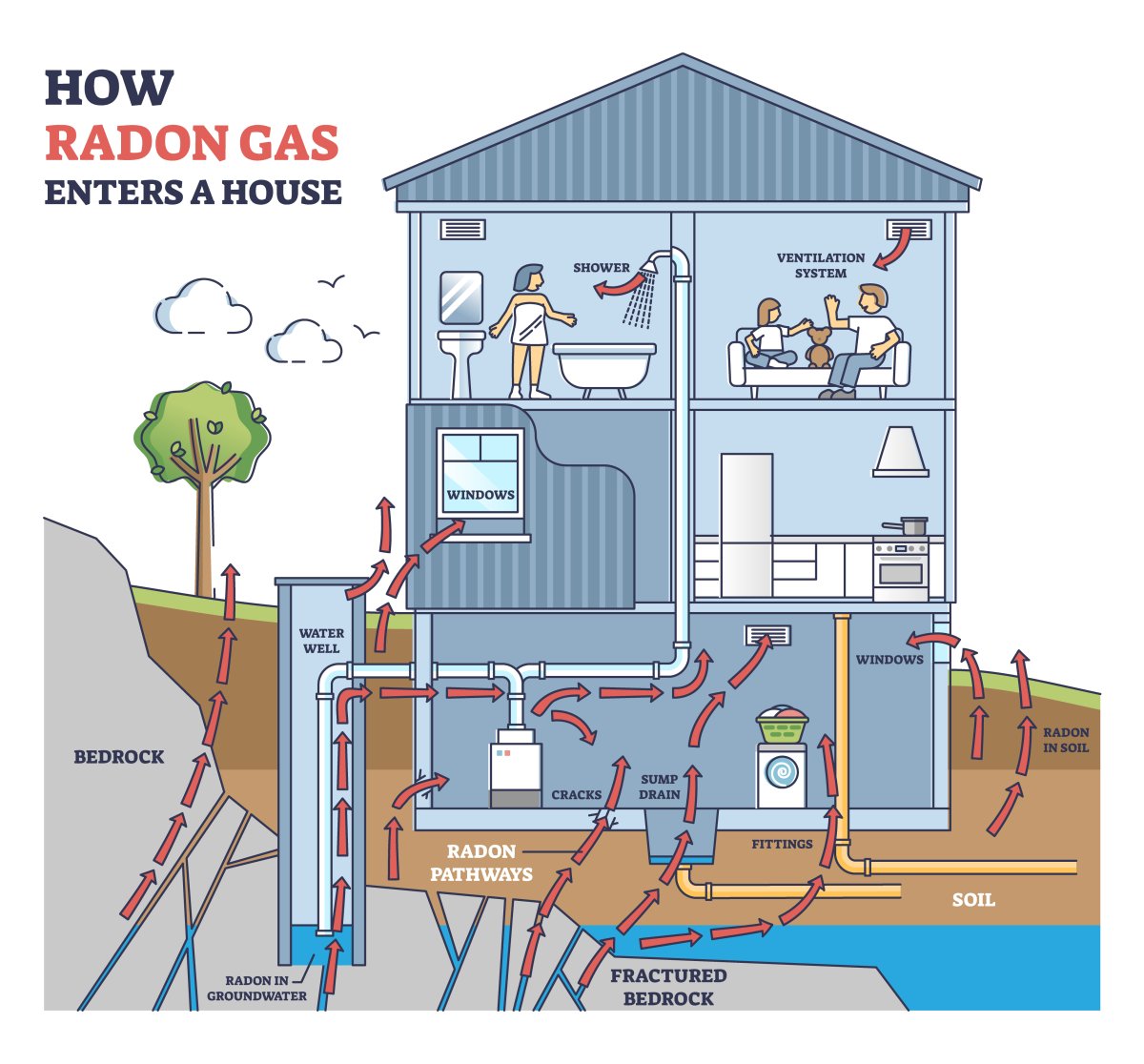During a routine health exam in March 2020, Kong Khoo, an oncologist at B.C. Cancer, was diagnosed with stage 1 lung cancer. He then underwent surgery to remove half of his right lung.

Khoo was a nonsmoker and said he had a gut feeling he knew where the cancer came from — radon exposure in his home.
“I’m a cancer specialist, I treat lung cancer,” he told Global News. “I had known that radon causes lung cancer at small percentages, but I didn’t think it was a problem for me and I didn’t think it would be in my house.”
He then ordered a radon detector and measured the levels of the gas in his Kelowna home. He found that radon levels were spiking in parts of his house, particularly in the basement where his son played Lego, he said.

“I knew right then that this is probably the main cause of my lung cancer,” said Khoo, adding that he is thankful doctors were able to find the cancer so early, as he didn’t have any symptoms.
“The radon detector was the most important $300 I spent in my life,” he said. He immediately hired a specialist to mitigate the radon by installing a system that safely diverted it through a pipe under his house.
As the weather takes a chilly turn and Canadians start retreating more indoors, Khoo and other health experts are warning about the invisible threat of radon gas that can quietly seep into homes, offices and schools.
What is radon?
Radon is a radioactive gas that comes from the breakdown of uranium in soil and rock, according to Health Canada.
When it’s released from the ground into the outdoor air, it is diluted and is not a concern, but in enclosed spaces, like homes, it can accumulate to high levels.
Uranium is a common element found everywhere in the earth’s crust. As a result, radon gas can be found in almost all homes in Canada, Health Canada says.

The health regulator estimates that around seven per cent of homes across the country have high levels of radon. But this also differs across the country, as some regions of Canada have higher amounts of uranium in underlying rock and soil.
For example, a 2012, Health Canada survey found that Saskatchewan, Manitoba, New Brunswick and the Yukon are at high risk because of their geology, and Nunavut and Prince Edward Island are at the lowest. However, Health Canada warns there are no areas of the country that are radon-free.
Radon and lung cancer
Radon is the leading cause of lung cancer in Canada for nonsmokers, according to the Canadian Cancer Society. The radioactive gas can build up to hazardous levels indoors, especially in poorly ventilated areas, experts warn.
“Radon is a naturally occurring gas found in the soil all across Canada. It moves up and into the air around us and it’s invisible. You can’t smell or taste it,” explained Pam Warkentin, the executive director of the Canadian Association of Radon Scientists and Technologists (CARST).
“Whenever a building is in contact with the soil, the radon can come into it. And radon is linked to lung cancer, so exposure to elevated levels of radon is a concern because it can increase a person’s risk of developing lung cancer,” she said.
It is estimated that about 16 per cent of lung cancers in Canada are related to radon exposure, resulting in more than 3,000 lung cancer deaths each year, according to Health Canada.
And people who smoke and are exposed to radon have an even higher risk of lung cancer, explained Elizabeth Holmes, director of health policy with the Canadian Cancer Society.
“It’s that time of year, in November when people are inside and the windows are open less. It’s those poorly ventilated areas,” she said.
“The Canadian Cancer Society recommends that people test their homes for radon and then take action to reduce high levels of radon if they are found. And that may involve working with a certified professional who can do some of the tests for you.”
How radon seeps into homes
Whether it’s a residential dwelling, a restaurant, or a school, Warkentin said radon can seep into buildings through various pathways. These include seepage through foundation cracks, entry via openings in pipes, and even through sump pumps and floor drains — “any openings that provide a pathway for the gas to come in,” she said.
“It can be very small pathways, but the gas can enter through them.”
Radon concentration levels also vary from one house to another, even if they are of similar designs and next door to each other, she said.
“One home can be high. And then the neighbour’s home right next door could be low. So the only way to know is to test,” she said.
Testing for radon
Radon is invisible, odourless and tasteless, but can be easily measured with a radon detector, Warkentin said.
There are a few options when it comes to getting a radon testing kit.
The cheaper, more affordable radon detectors are the one-use types, designed for a single measurement or short-term monitoring. The approved tests can be found online at Take Action on Radon. For these tests, Warkentin said it’s important to leave it in a good location for three months and then send it in for analysis.
“For those that want more smart technology, there are all sorts of different ones that are available, and they’ll provide you with a more instant readout,” she said. These can also be found on the Take Action on Radon website, or at other retailers.
“You can consider leaving them for at least a week to then start to look at how the levels are going up and down in your home. But Health Canada recommends that everyone tests for 91 days.”

After conducting a radon test, she said it’s important to note that Health Canada has set guidelines for acceptable radon levels in indoor air.
The health regulator recommends that all homes and buildings are below 200 becquerels per metre cubed (Bq/m³).
“Becquerels is a measurement of radioactivity in the volume of air. And it so anything above that really should be fixed or reduced. But the World Health Organization also has a recommendation of 100 becquerels,” she said, adding that when you reduce, you may want to reduce it as low as possible.
If the measurement is over 200 Bq/m³, she said to hire a qualified radon mitigation professional to install a reduction system.






Comments